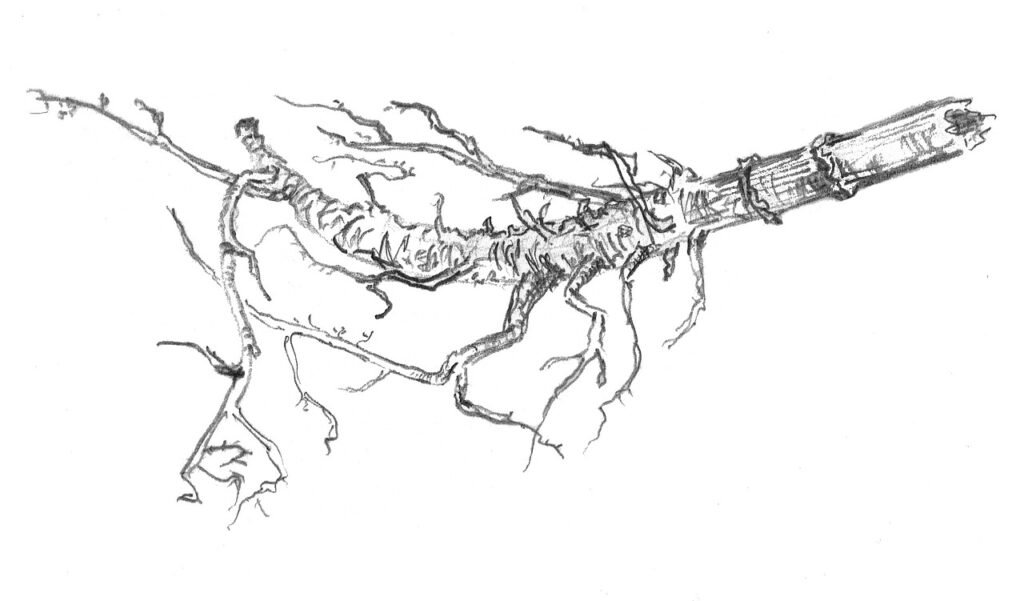Have you ever wondered how your body reacts to cold, especially when you jump into icy water or brace yourself against a cold winter breeze? It turns out that a significant part of this reaction is tied to a little-known nerve called the vagus nerve. This seventeen-inch-long nerve runs from your brain down through your neck and into your abdomen, playing a crucial role in managing bodily functions, as well as your response to cold exposure. Let’s dig deeper into how it all works.
Understanding the Vagus Nerve
The vagus nerve is one of the most important nerves in your body. It’s part of your autonomic nervous system, which controls involuntary functions like heart rate, digestion, and respiratory rate. Understanding this nerve is essential for grasping its role in cold exposure.
Anatomy and Function
The vagus nerve extends from your brainstem down to various organs, including the heart, lungs, and digestive tract. It comprised of both sensory and motor fibers, offering a two-way communication path between the brain and body. This means you experience sensations from your body that your brain can respond to, influencing bodily functions in real-time.
It’s a long journey that can feel quite lonely, but don’t worry; your vagus nerve is never really alone in its mission. It operates alongside other nerves and systems, making it an integral player in your body’s overall response mechanisms.
Connection to the Autonomic Nervous System
The vagus nerve has a dual role in your autonomic nervous system: it acts as the primary component of the parasympathetic nervous system while also engaging with the sympathetic nervous system when necessary. This dual action is vital during cold exposure, as it helps balance your body’s reaction—whether it needs to slow down and conserve energy or ramp up its defenses to deal with the cold.
How Cold Affects Your Body
When you expose yourself to cold, your body responds in various ways, some of which are guided by the vagus nerve. This nerve plays a key role in mediating your physiological and psychological responses to cold stress.
Physiological Responses
Cold exposure can lead to a range of physiological responses, such as:
| Response | Vagus Nerve’s Role |
|---|---|
| Shivering | The vagus nerve helps regulate muscle contractions. |
| Heart Rate | It can slow down or speed up your heart rate based on perceived threats. |
| Respiratory Rate | Affects your breathing, adjusting it for survival. |
| Blood Vessels | Helps manage blood flow, directing it where it’s needed. |
These responses ensure your body can protect and sustain itself in adverse conditions.
Psychological Responses
Cold can also trigger psychological responses, such as stress or anxiety, mediated by the vagus nerve. If you’re uncomfortable in the cold, your brain reads that discomfort and sends signals through the vagus nerve to activate your stress response. Understanding this helps you appreciate how your nervous system shapes your experience.

The Vagus Nerve and Your Immune System
Your immune system is not just about fighting off illness; it is also modulated by the vagus nerve. When exposed to cold, your body’s immunity can either strengthen or weaken, depending on how your body responds to the cold.
Cold Exposure and Inflammation
Cold exposure has been shown to affect inflammation levels in the body. The vagus nerve can help dampen inflammatory responses, promoting recovery and resilience. When you’re cold, your body may activate inflammatory pathways, triggering a response to protect itself.
However, by engaging with the vagus nerve through deep breathing and relaxation techniques, you can help modulate this response, potentially reducing inflammation.
Immune Function Boosting
Regular cold exposure, like cold showers or ice baths, may stimulate vagal tone, the strength of the vagus nerve’s signals. This can lead to improved immune function. A well-functioning vagus nerve may help keep your immune responses efficient, enabling your body to thrive even when faced with cold.
The Science of Cold Exposure
Research surrounding cold exposure has gained traction, and some of the findings spotlight how the vagus nerve fits into the picture. It helps your body respond optimally to cold temperatures while maintaining homeostasis.
Hormonal Influences
The vagus nerve influences various hormones in your body that can affect how you handle cold exposure. When you’re chilled, stress hormones like cortisol may rise. However, an activated vagus nerve can signal for the release of hormones that support recovery and relaxation, helping to balance your body’s stress response.
Studies Worth Noting
There are intriguing studies that highlight the connection between the vagus nerve and cold exposure. Some research suggests that cold exposure can enhance vagal tone, potentially leading to improved mood, reduced stress, and better emotional regulation. Understanding these correlations can empower you to harness the benefits of cold.
Adaptation and Resilience
With time and consistent exposure to cold temperatures, your body can adapt. This adaptation process may rely heavily on the vagus nerve. As your body becomes accustomed to cold, you may notice improved tolerance and a calmer, more measured response, thanks to your vagus nerve stepping in and managing what could otherwise be a chaotic state.

Practical Applications of Vagus Nerve Engagement
So how can you use this knowledge about the vagus nerve and cold exposure to your advantage? Here are some practical applications to consider:
Controlled Breathing Techniques
Learning controlled breathing techniques can help stimulate the vagus nerve effectively. Breathing exercises, like deep belly breathing, can promote a calming effect during cold exposure, encouraging your body to adapt better:
- Deep Inhale: Breathe deeply through your nose, allowing your diaphragm to expand.
- Hold: Pause for a moment, holding your breath.
- Slow Exhale: Release your breath slowly through your mouth.
Engaging in this breathing pattern helps activate the parasympathetic nervous system and can counter the shock of cold.
Cold Showers and Ice Baths
If you’re feeling adventurous and want to implement cold exposure directly, consider cold showers or ice baths. You can start small by just splashing your face with cold water or stepping into cooler water gradually. Each time you expose your body to cold, focus on breathing and relaxing, giving the vagus nerve a workout.
Meditation and Mindfulness
Practicing mindfulness and meditation can have a powerful effect on your vagal tone. Setting aside just a few minutes a day for meditation can yield long-term benefits in how your body and mind react to different temperatures and stressors.
- Find Peace: Settle down in a quiet area, close your eyes, and breathe deeply.
- Check In: Notice areas of tension in your body and consciously relax them.
- Stay Present: Focus on your breathing or a mantra to keep your thoughts anchored.
Regular Movement and Exposure
Incorporate gentle exercise, such as yoga or walking in cooler temperatures, into your routine. This not only supports overall health but also strengthens your vagus nerve by encouraging regular activation and resilience.
Risks of Cold Exposure
While cold exposure has its benefits, it’s essential to be aware of the risks involved. The vagus nerve plays a role here as well.
Hypothermia and Vagal Responses
If you expose yourself to extreme cold without proper preparation, you could risk hypothermia, a condition where the body loses heat faster than it can produce it. Your vagus nerve can react by slowing heart rate and breathing in response to cold stress, but understanding when conditions become dangerous is crucial.
Recognizing Your Limits
Listen to your body. If you start feeling excessively cold or uncomfortable, it’s time to get warm. The goal is to find a balance between benefiting from cold exposure while keeping yourself safe.
Health Conditions
Certain health conditions, especially those related to the heart or blood pressure, may be exacerbated by significant temperature changes. Always consult with a healthcare professional before diving into cold exposure practices, especially if you have pre-existing conditions.

The Takeaway
The relationship between the vagus nerve and cold exposure is a fascinating blend of biology and experience. As you gain a deeper understanding of how your body responds to temperature changes, you may gain some powerful insights into your health and well-being.
Being mindful of the role the vagus nerve plays—not just in cold exposure, but in many aspects of life—can help you cultivate a better relationship with your body. Whether you’re braving the cold or seeking tranquility in daily activities, tapping into this nerve can guide you to more balanced responses and a heightened sense of body awareness.
In the end, whether you find joy in frigid waters or simply want to embrace a little cool breeze, remember your body has the tools to adapt and thrive. Tune in to your internal workings, and take advantage of the vagus nerve to navigate life’s various challenges, including those chilly moments. Embrace the cold, and let your body show you its remarkable power to adapt and flourish.

